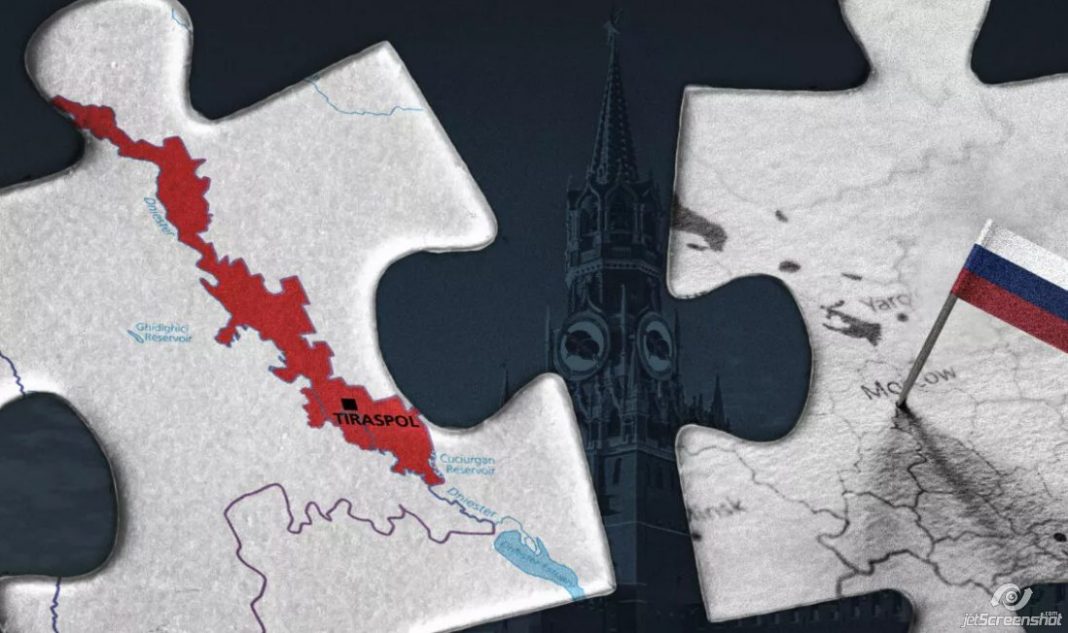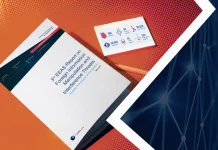By EUvsDisinfo
Over the past weeks Moldova has got a lot of international press coverage. The New York Times, The Washington Post, Politico, DW, France 24, Euractiv, European Pravda, The Moscow Times, Meduza, Balkan Insight, CNN, CNBC, The Guardian, Aljazeera, and many more wrote about a possible request from Tiraspol to Moscow to accept the Transnistrian region of Moldova as part of the Russian Federation.
“Deputies of all levels from Transnistria” were reported to possibly adopt the request on 28 February, during a special session called by de-facto leader Vadim Krasnoselsky. The reports all go back to an opinion – not even original information – of a local opposition activist, Ghennady Chorba, who wrote on his Facebook page that this could be the main topic at the congress, especially given that Russian president Vladimir Putin was expected to address the Russian Federal Assembly on 29 February.
Constant pressure point
Chorba’s arguments were that in the past, during similar sessions of Transnistrian deputies, various resolutions had been adopted, for example in 1991, when the region declared its unrecognised independence from Moldova, or in 2006, when a referendum to join Russia was called (with 97 per cent voting in favour). In addition, he saw a repeating pattern in what Moscow was doing in relation to Moldova from the events in Ukraine leading up to February 2022.
There are some similarities, indeed. For a long time, pro-Russian forces in Moldova have repeated the narrative “The West and NATO are arming Moldova to involve it in the war”. At the beginning of 2024, more such disinformation appeared – either that NATO is sending military equipment, or that an old airport in Marculesti will be used as a base for F-16 fighter jets that are sent to Ukraine.
Disinformation regarding Moldova’s use as a hub for F-16 fighters reappeared, including on official Russian channels, even though it had been debunked repeatedly by Moldovan officials.
In parallel, Moscow accused Chisinau of discrimination of its Russian-speaking population and of celebrating personalities who collaborated with the Nazis during WWII.
Another point of reference is a statement by Russian Minister of Foreign Affairs, Sergey Lavrov, in the State Duma on 14 February 2024, claiming that “the West” wants to take Russia out of the negotiating process on the Transnistrian conflict. Lavrov was quoted as saying “we still have 200,000 citizens living there (in Transnistria – TASS). And, of course, we are concerned about their fate, and we will not allow them to become victims of another Western adventure”.
Observers including the Institute for the Study of War noted the parallel between Lavrov’s comment and Russia’s allegations about how the West undermined the Minsk agreements in the case of Ukraine.
Several days later, Lavrov threatened directly that Moldova could repeat the fate of Ukraine, because Chisinau would allegedly follow blindly orders coming “from the West” to put pressure on the Transnistrian region and on Gagauz autonomy – a region in the south of Moldova inhabited by a Turkic-speaking, Orthodox ethnic group, where Russia has a big influence.
Crying for attention
The de-facto leader in Tiraspol, Vadim Krasnoselsky, wrote on 19 February that he was summoning the congress because the region was under pressure, people’s rights were being violated, and the socio-economic situation was worsening. He was most probably referring to the provisions of the new Customs Code of Moldova, which introduced the same customs import tariffs on Transnistrian businesses as on the rest of Moldova when trading with countries with which Moldova has no free trade agreements, such as the US, China, etc.). Until January 2024, Transnistrian businesses had been enjoying an exemption from these customs duties.
Moldovan and Russian media covered the announcement in a neutral manner; only after Ghennady Chorba’s comment did analysts and journalists start to comment on how Russia might use this occasion to create additional tensions in the region, or even to create a new flashpoint, to establish a new enclave or land corridor from occupied regions of Ukraine to Moldova’s Transnistrian region.
Russian RIA Novosti published on 24 February 2024 an interview with Vadim Krasnoselsky, in which the de-facto leader complained about economic pressure from Chisinau and repeated a month-old narrative about “training sabotage groups on Moldovan territory… It is necessary to understand that given the active militarisation of Moldova, constant military exercises in this country, calls for the transformation of the peacekeeping mission, and a revision of the status of neutrality, any incidents can have far-reaching consequences. Aggression is escalating in neighbouring Moldova”.
This quote was shared by many pro-Russian Moldovan Telegram channels, but also by the well-known Russian propagandist Vladimir Soloviev . Moldovan pro-Kremlin MP Bogdan Tirdea referred to a Romanian expert who said that President Maia Sandu had allowed Ukraine to attack the Transnistrian region.
The Institute for the Study of War published a comprehensive analysis on the subject, forecasting that the Transnistrian region will either organise a referendum or request annexation. International outlets (El Pais, The Telegraph, Spiegel, TF1, etc.) followed with excited headlines about a possible move by Putin in Moldova.
Ukrainian intelligence officially refuted this possibility, stating that this is a “disinformation campaign” launched by Russia to create nervousness and tensions in the region. Seasoned experts were likewise sceptical about such a scenario.
How it was seen from inside Moldova
Watchdog.md’s Valeriu Pasha thought it could have been an information operation to deceive public opinion or create tensions, but at that moment, it was difficult to predict the goal or the outcome. Still, there were no signs of a threat to Moldova, because “Putin cannot reach Transnistria at this moment”, thus he would not risk proclaiming annexation of a region which he would not be able to physically defend.
Former Deputy Prime Minister of Moldova for Reintegration Alexandru Flenchea believed that the Transnistrian company Sheriff, which controls the economy of the region, is behind the organisation of the congress. The economy is currently “grey”, i.e., outside the effective reach of the Moldovan authorities, and Sheriff is affected by the new customs rules. Many investigations show how this company benefits from Transnistria’s unrecognised status.
Some analysts were convinced even before the meeting of Transnistrian deputies that nothing major would happen, given the fact that on the eve of the congress, US officials visited the region and held meetings with the de-facto leadership.
The balloon deflated for now
The Transnistrian deputies of all levels – 620 people in total – spent several hours together in Tiraspol on 28 February, complained about difficult times and blamed Chisinau. In the end, they adopted a resolution calling for protection from Russia (addressing Russian lawmakers rather than President Putin), the UN, the OSCE, the EU and the US, and even the International Committee of the Red Cross. Most of the international media reporting from the Congress focused primarily on the region’s call on Russia for protection, without much attention to the appeals to other foreign countries or international organisations.
The Russian Ministry of Foreign Affairs was among the first to react, stating that “protecting the interests of the residents of Transnistria, our compatriots, is one of the priorities. All requests are always carefully considered by the relevant Russian departments”, reads the statement. The State Duma mentioned that the address would be considered when Moscow receives it.
In fact, that was all. Apparently, the resolution adopted in Tiraspol was still on its way, as on 29 February, the Russian President spoke for more than two hours in front of the Federal Assembly in Moscow, but completely ignored the Transnistrian issue.
Nevertheless, Moldovan President Maia Sandu believes that Moscow is using Tiraspol to create tensions in Moldova and that the Kremlin had requested the convocation of the congress of Transnistrian deputies in order to feed the propaganda machine and scare Moldovans. According to her, Russia cannot do anything more than that.
Playbook with missing pages
In disinformation operations, it is usually difficult to trace the original piece of news. Disinformation often spreads through multiple channels, known to be part of the disinformation ecosystem (e.g., Sputnik, Komsomolskaya Pravda, different Telegram channels). These channels might deny the alleged outcome (in this case, that Transnistrian deputies would request Russia to annex the region), but would not say anything about the source of information itself because that would facilitate its debunking (in this case, that this is the opinion of a local activist).
This time, these channels indicated themselves the source of the initial information, treating it ironically, and accused Chisinau of making up the whole story about the annexation request.
At the same time, shortly after the story broke, pro-Russian Moldovan channels such as Sputnik or Smuglianka denied vehemently that Tiraspol was preparing to address Putin, further implying that this was not a centrally run operation.
In line with its long-term playbook, the Kremlin makes sure that the plight of Russian citizens in the Transnistrian region is kept alive in the information space with occasional references from its main talking heads so that it can be instrumentalised when the opportunity arises.
What deserves special attention in this case is the way international media covered the issue. Prominent outlets debated whether it was possible for Tiraspol to request, and for Moscow to accept, the annexation of the region, but ignored that the discussion started not from a factual report but an individual opinion. They often de-emphasised official statements by the Moldovan government which sought to dismiss threats of escalation and calm its population.
Russian propaganda used this disproportionate informational attention to claim that Russian citizens in the Transnistrian region are suffering and to accuse the authorities in Chisinau of Russophobia.
Keep cool
Leading up to the congress in Tiraspol, Moldovan officials’ rather moderate reaction was probably intended to downplay the issue and avoid panic. For the internal audience it worked, but for external readers and viewers, a clearer and stronger message could have had a bigger impact.
Still, the wheels of the Kremlin disinformation machine keep on turning. Even after Putin’s address on 29 February in which he ignored the subject, Sputnik continued to publish materials about how the Transnistrian region “declared independence” in 1992. The head of the Federation Council of Russia met the pro-Russian governor of the autonomous Moldovan region of Gagauzia and criticised the Chisinau authorities for moving away from the CIS and Russia. Russian Minister of Foreign Affairs Lavrov said in Antalya that Moldova is following Ukraine’s example “cancelling everything Russian and discriminating against the Russian language”.
As mentioned, the situation in the Transnistrian region is not so suitable for Moscow to pose a direct military threat and clearly not all stars are aligned at this point in order to produce a more dangerous crisis. Still, the Transnistrian card in the Kremlin’s hand will surely be played again in the future, not necessarily in support of Sheriff’s business interests but rather to hinder the efforts of Moldovan government on the country’s EU accession path and ahead of upcoming elections and a planned referendum on EU integration.
By EUvsDisinfo





